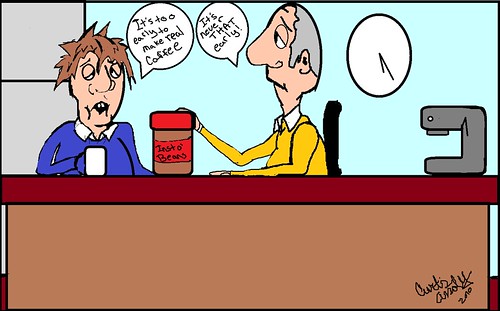The Abosolute 10 Greatest Tips for Purchasing a Home Espresso Machine
Author: MarkusYannies
Choosing the right home espresso machine can be a difficult task but with some basic knowledge and wisdom of how a coffee and espresso maker works, how much they cost, and specific features you get for the money, selecting the right option is easy. One point is clear. If you are spending money at a coffee shop at least 3-4 times per week the payoff on a home espresso machine is well worth the investment:
Let’s do the math:
1. Average cost for a coffee specialty drink such as an espresso or cappuccino: $3.50
2. Number of trips to the Coffee Shop per year: 52 weeks * 4 visits per week = 208 yearly visits
3. Yearly Cost: $3.50 espresso drink cost * 208 yearly visits = $728 Annually
For $728, one can purchase a full-featured super automatic espresso machine. Ok, now that you see that an home espresso machines is good investment, let talk about some tips on how to buy one:
1. Decide what type of espresso drinks you like. Do you like a cappuccino or mocha or just a straight shot of espresso? How about a regular cup of coffee? The choices for home espresso machines will vary greatly. Most super automatic espresso coffee machines can brew you a strong cup of coffee just like you find at the coffee houses as well as the espresso drinks. Perhaps you would like to choose between regular coffee and decaf in which case a bypass doser on the home espresso machine is a good option. Choose between a super automatic, semi automatic, or automatic home espresso machines. The most popular type of espresso machine is a super automatic espresso machines.
2. Cost. While many people like to have all of the bells and whistles, buying a quality espresso machine is much like buying a car. Do you need heated seats if you live in Arizona? Same principle. Decide on what type of drinks you like, find a machine with those features and set a budget. The most common question we get is how much do I have to spend for a quality machine? If you are spending $750 - $1,000 on a fine brand super automatic such as Saeco or Gaggia, you will be purchasing a quality home espresso machine with standard features suitable for most people. If you want the highest quality espresso drinks, a semi automatic espresso machine such as a Rancilio or Pasquini are priced in the $700 to $1,500 range. Semi-automatic espresso machines are a bit more work but results are outstanding. All excellent choices.
3. Popular Espresso Features. Milk based drinks – If you love the lattes, mochas, and cappuccino’s make sure you buy a machine with two boilers or dual heating elements. Using a single boiler is ok for standard espresso drinks but a dual boiler will produce the fastest steam. This is typically a feature that separates the cheap $100 - $200 espresso machines from the quality home espresso machines.
Adjustable water volume and coffee dose - Some machines will only have the ability to adjust the water so the more water you have the weaker the cup. Having both an adjustable doser and water volume gives you the most control. Excellent features to have especially if want a standard cup of coffee.
Digital or Analog (dials) – There is much debate on which is better to have. This comes down to a personal choice. With digital machines, your options are greater and you can really get dialed in on the coffee / water ratio. You also get statistics on your home espresso machine and most digital espresso machines will tell you when to clean it. Another key feature digital machines typically have is the ability to regulate when the machine is on or off.
View Quality http://www.moderncoffeedesigns.com home espresso machines
Other important features:
Look for a large water reservoir typically over 40 ounces.
Cup height adjustment – make sure your cup will fit. Most espresso cups are 4 – 6 inches.
Water filter – espresso machines with a water filter will produce better coffee and keep you machine in better condition. Water filters are highly recommended.
Bean hopper size – Get a machine with a minimum or 8 ounces. You do not want to be filling the bean hopper every day.
Cup Warmer – Coffee maintains its best flavor when poured into a heated cup.
Grinder Settings – Make sure the espresso machines have at least 3 grinder settings. This is essential for dialing in the right grind.
Heat up time – you do not want to be waiting over 5 minutes for an espresso machine to heat up. A good machine will be ready for a second cup of espresso is just under 1-2 minutes after the initial heat-up.
4. Size and Construction – Make sure you have adequate counter space for the home espresso machine. These espresso machines are generally larger than a typical coffee pot so make sure you measure. Also, having a movable base will allow you to pull the machine out to fill it with water and beans. Almost all of the super automatic home espresso machines body’s are made of heavy duty plastic or stainless steel. The inside boilers are either stainless steel or aluminum. Often people make the mistake of thinking the plastic is not as durable but in reality, it is. It is what is on the inside that counts. A stainless steel boiler will offer years of service if properly maintained. The espresso machines of today feature sleek, modern designs. If you are purchasing a semi-automatic espresso machine, consider stainless steel because of all of the interaction with the machine. If you choose a super automatic, a plastic design with stainless steel or aluminum boilers is sufficient.
5. Proper Cleaning and maintenance – The number one problem with home espresso machines is scale build-up. If you own a quality machine, regular descaling and back flushing is not recommended, it’s required. What I mean is that if you want to maintain your warranty, you must complete these maintenance items. It takes about 15 minutes each month but will keep your machine operating for years. Don’t let your machine sit idle for a long time with water loaded as the minerals in the water can cause issues in the boilers and metal components.
6. Water and Coffee – Buying quality coffee and using filtered water will provide the ultimate coffee experience. Many espresso machines have built in water filters such as the Aqua Prima Water Filter. If you use tap water and cheap brand name coffee don’t waste your money on a quality espresso machine. Fine coffee and filtered water contribute significantly to the quality of the brew. Use a coffee such as Lavazza or Gaggia especially made for a higher end coffee espresso machine.
7. Choosing where to buy a home espresso machine – You can buy these machines from many of the major stores but the issue is support and buying guidance. You simply cannot call the “red dot” store or “overstock” stores and expect to find someone that is knowledgeable about quality espresso coffee machines. Try calling one of the major chains for support and they will refer you to the manufacturer. The truth is that your retailer should be able to answer most questions and get you technical support if you need it. You are not going to get the level of support from a big chain store or large e-tailer.
Today’s home espresso machines are sophisticated machines. Buy the machine from a reputable online retailer who specializes in espresso machines or coffee makers. Retail stores that specialize in espresso and coffee machines have knowledgeable staff that can assist you with questions, problems, tips, and service. And guess what, the prices in the espresso coffee machine specialty stores are typically less because of the volume of machines they sell.
Choose a store that has a Better Business Bureau accreditation so you can be sure you are buying from a reputable dealer. Beware of stores that do not specialize in coffee and espresso machines. Where is the best place to find the best cup of coffee or espresso? It is your own kitchen of course. Happy shopping.
Article Source: http://www.articlesbase.com/kitchens-articles/the-abosolute-10-greatest-tips-for-purchasing-a-home-espresso-machine-895038.html
About the Author
Markus Yannies recommends the gaggia platinum swing and quality
saeco espresso machines
View a Quality coffee and espresso maker





